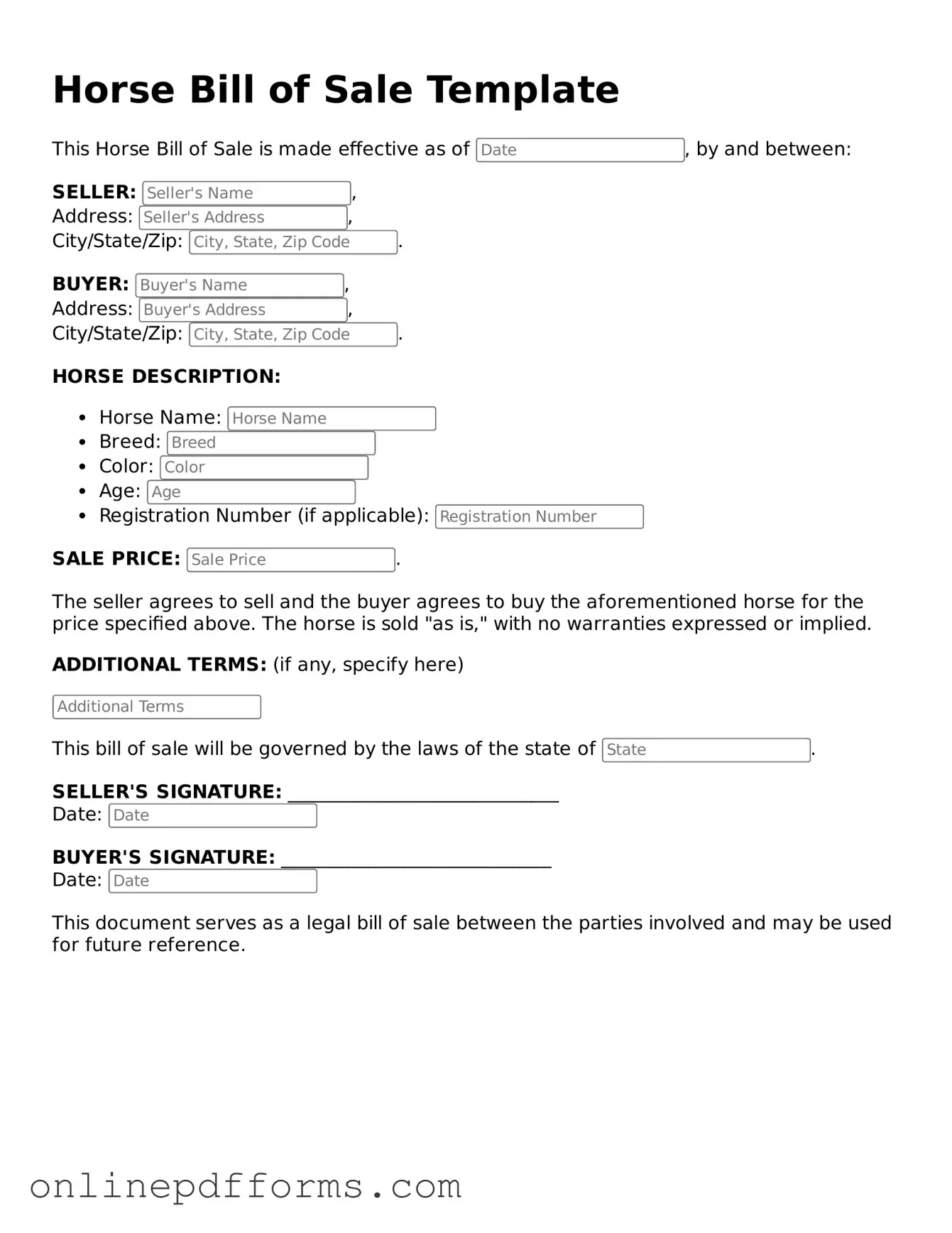The Horse Bill of Sale form is similar to a Vehicle Bill of Sale. Both documents serve as proof of transfer of ownership for a specific asset. Just like the Horse Bill of Sale, the Vehicle Bill of Sale includes details such as the buyer's and seller's names, the description of the vehicle, and the purchase price. This document is essential for registering the vehicle with the Department of Motor Vehicles, ensuring that the new owner has legal rights to the vehicle.
Another document that shares similarities with the Horse Bill of Sale is the Pet Bill of Sale. This form is used when transferring ownership of a pet from one person to another. It typically includes the names of both parties, a description of the pet, and the sale price. Like the Horse Bill of Sale, it helps establish legal ownership and may include health records or registration information relevant to the pet.
The Boat Bill of Sale is also comparable to the Horse Bill of Sale. This document outlines the transfer of ownership for a boat, detailing the seller, buyer, boat specifications, and the transaction amount. Both forms serve as legal proof of ownership and are often required for registration with state authorities, ensuring that the new owner can operate the boat legally.
In addition, the Equipment Bill of Sale is similar in nature. This document is used for the sale of equipment, whether for personal or business use. It includes the buyer's and seller's information, a description of the equipment, and the purchase price. Both the Equipment Bill of Sale and the Horse Bill of Sale protect the interests of both parties by documenting the transaction and confirming ownership transfer.
For those interested in documenting the sale of a vehicle, you can find that the process mirrors other types of transactions, such as those outlined in a horse or mobile home sale. In particular, many buyers and sellers opt to use Vehicle Bill of Sale Forms to ensure all necessary details are accurately recorded, providing essential protection and clarity for both parties involved.
The Real Estate Purchase Agreement also bears resemblance to the Horse Bill of Sale, though it deals with real property rather than personal property. This agreement outlines the terms of the sale, including the buyer and seller's details, property description, and sale price. Like the Horse Bill of Sale, it serves as a formal record of the transaction and is often required for legal purposes, ensuring that ownership is clearly defined.
Lastly, the Firearm Bill of Sale is another document that aligns with the Horse Bill of Sale. This form is used to document the sale and transfer of ownership of firearms. It includes information about the buyer and seller, a description of the firearm, and the purchase price. Both documents aim to provide a clear record of ownership transfer, which can be crucial for legal compliance and accountability.
